Prehensile-Tailed Porcupine - Central and South America
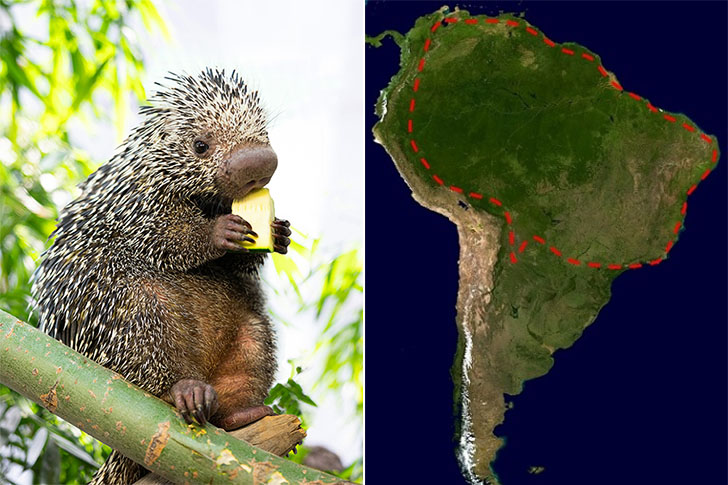
The prehensile-tailed porcupine is an intriguing exotic pet from Central and South America. With a unique tail that can grip onto branches, these nocturnal creatures would be popular pets in some countries due to their docile nature. They are not high maintenance, requiring a large enclosure with plenty of climbing opportunities, a varied diet of fruits and vegetables, and routine veterinary check-ups.
However, they may not be good beginner pets due to their sharp quills, nocturnal habits, and a strong, musky odor. This distinctive scent can be described as a pungent combination of urine and musk—unpleasant for some pet owners to tolerate.
Agouti - South America
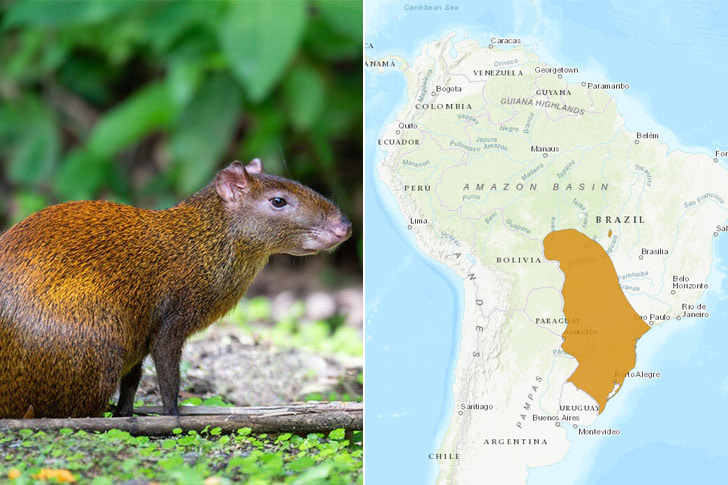
The Agouti is a small, furry exotic pet native to Central and South America. They come in various colors, have long legs, and are known for their intelligence and curiosity. They are relatively easy to care for, requiring a roomy enclosure, a varied diet of fruits and vegetables, and regular visits to the vet.
However, they have a strong-willed and skittish temperament, which can lead to stress-related health problems such as hair loss and digestive issues. They also have sharp teeth and can cause injury if they feel threatened. As a result, they are not suitable for inexperienced pet owners and require specialized care from experienced handlers.
Spotted Genet - Sub-Saharan Africa
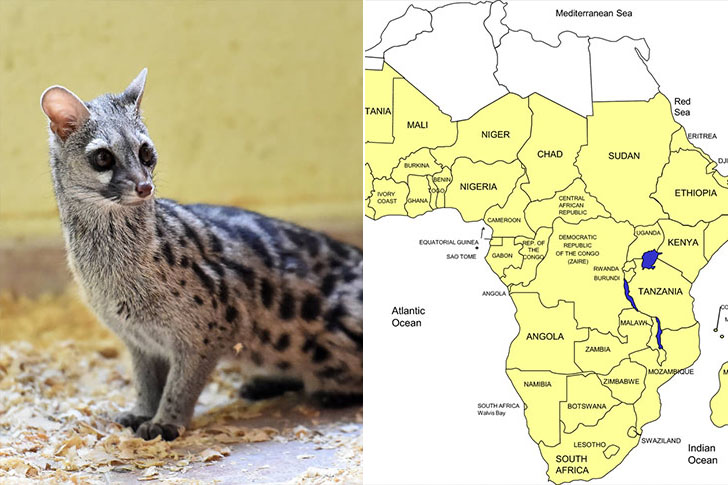
The spotted genet is a small carnivorous mammal native to sub-Saharan Africa that is sometimes kept as an exotic pet. They have a striking appearance and playful personality, which makes them an appealing choice for pet lovers. They require a spacious living space with vertical climbing and perching elements.
All these factors considered, owning a spotted Genet can be challenging, as wild animals need care from experienced handlers. Also, they use a strong musky odor for communication and marking their territory, which may be unpleasant for some people. The decision to keep one should be carefully considered after conducting thorough research.
Dik-Dik - Eastern and Southern Africa
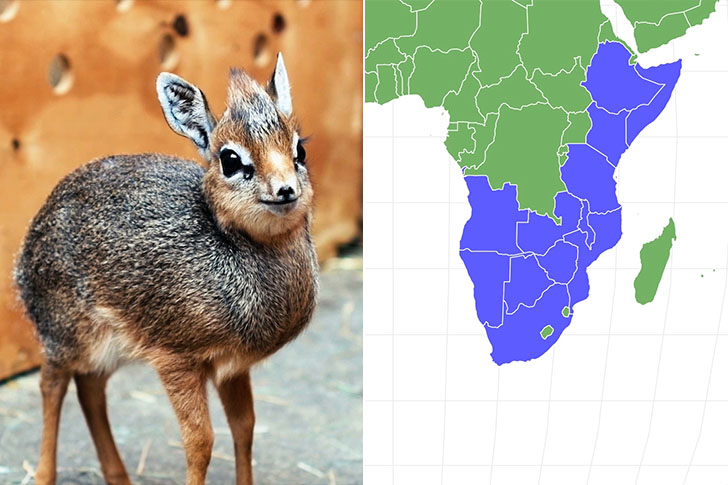
Dik-diks, the miniature antelopes, were once kept as pets in some parts of the world due to their adorable and cuddly appearance. In the '30s and '40s, they were popular as exotic pets, and several private owners had them. However, the practice of keeping these animals began to decline in the '50s and '60s due to growing awareness of the detrimental effects of captivity on wild animals.
In the United States, possessing dik-diks as pets is now strictly regulated, and permits are required to own them. Additionally, several countries, including Kenya and Tanzania, have banned the export of these creatures to discourage the trade in exotic pets.
Binturong - Southeast Asia

Binturongs, or bearcats, are exotic and fascinating creatures native to Southeast Asia that are sometimes kept as pets. Contrary to their name, they are not closely related to cats or bears. They have a distinctive appearance, with long shaggy black fur and a prehensile tail that they use to navigate the trees of their forest habitat. They are intelligent and social animals with playful personalities that appeal to pet owners.
Despite their alluring qualities, binturongs are not recommended for inexperienced pet owners, as they can be challenging to care for properly. Plus, with a potent musky odor similar to popcorn, you may need to prepare for some unique aromas in your home.
Raccoon Dog - East Asia

Raccoon dogs, or tanukis, are exotic animals that have garnered attention as possible pets. These playful creatures are known for their mischievous personalities and distinctive features, such as their fluffy tails. However, prospective owners should remember that these animals require a specific diet, ample space to move around, and regular veterinary care to thrive in captivity.
In some countries, owning a tanuki as a pet is illegal due to environmental concerns. Despite the challenges of owning them, they are interesting pets for the right person. In Japanese legends, the tanuki is one of the only two animals—with the kitsune as the other—that have natural magical powers.
Prevost Squirrel - Southeast Asia
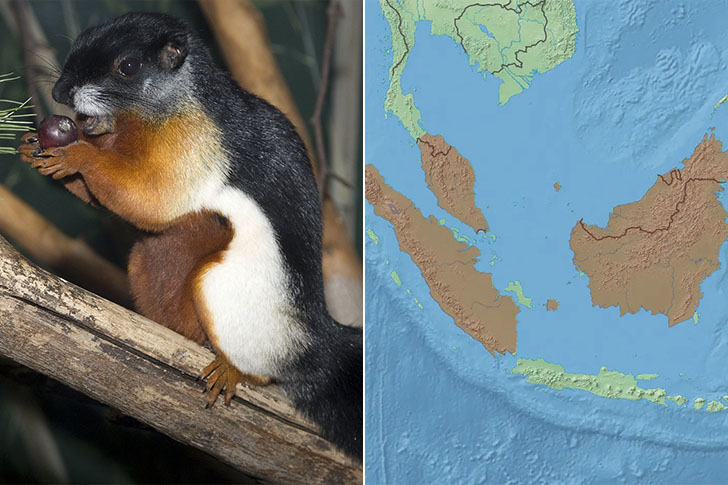
The Prevost's squirrel is both adorable and unique. These little critters are native to Southeast Asia and are known for their striking coat of fur, which ranges from brown to orange with a distinctive white underbelly. But don't let their cute appearance fool you—they are active and playful animals that require plenty of space and stimulation to thrive in captivity.
They're also known to be quite vocal, with a variety of chirps, barks, and whistles in their repertoire. With their charming personalities and eye-catching looks, Prevost's squirrels are a fantastic option for experienced exotic pet owners looking for a one-of-a-kind companion.
Hyrax - Africa and the Middle East
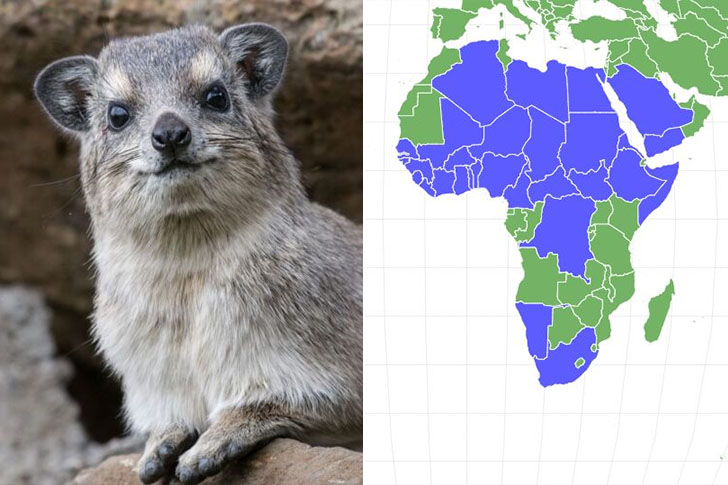
Looking for a unique pet that'll make friends and family do a double-take? Look no further than the hyrax. These creatures are native to Africa and the Middle East and come in a variety of shapes and sizes. They're known for their furry coats and adorable little ears, but don't let their cuteness fool you.
They are tough and resilient animals that are well-adapted to life in harsh environments. They're one of the few mammals that can survive in the desert without drinking water. While they might not be the most conventional pet, a hyrax surely makes an interesting companion.
Tayra - Central and South America
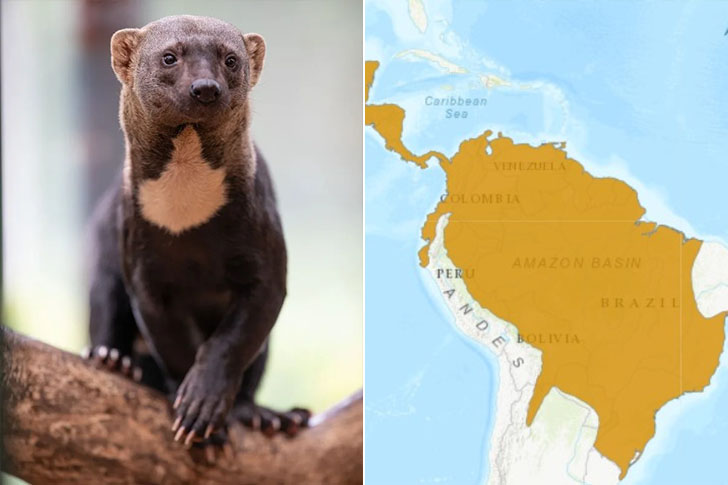
While they may look like a furry cross between a weasel and a cat, tayras are not average pets. These critters are known for their intelligence and curiosity, making them entertaining and challenging to keep. However, before deciding to bring one into the home, please remember that they require a lot of specialized care.
Plus, they have a strong scent that some people find unpleasant. As for their diet, they are omnivorous animals that feed on various foods, including fruits, insects, rodents, eggs, and carrion. An ideal diet for a tayra in captivity should mimic its natural diet as closely as possible.
Four-Eyed Opossum - Central and South America
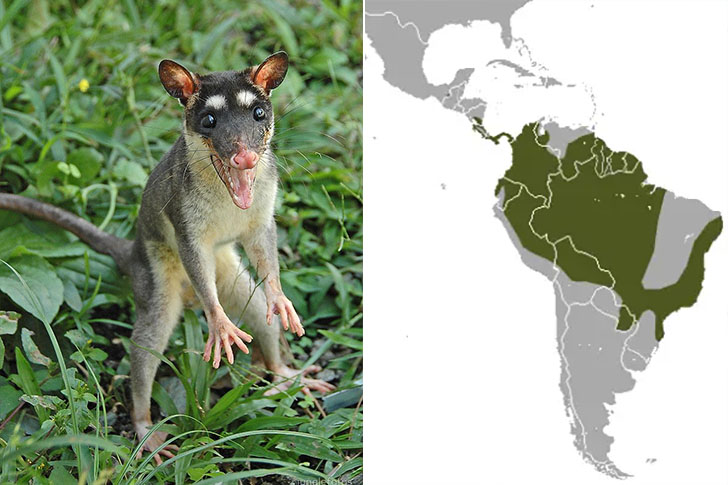
Despite its somewhat menacing name and appearance, the four-eyed possum is a unique and fascinating creature that is sometimes kept as a pet. These marsupials are native to Central and South America and have several exciting adaptations that make them well-suited to their natural habitat.
For example, they are primarily nocturnal, meaning they are active at night and sleep during the day. This adaptation allows them to avoid predators that are active during the day, such as birds of prey. However, they are still wild animals and can be challenging to care for as pets. They also have a strong musky odor that can be off-putting.
Zorilla - Africa and Asia
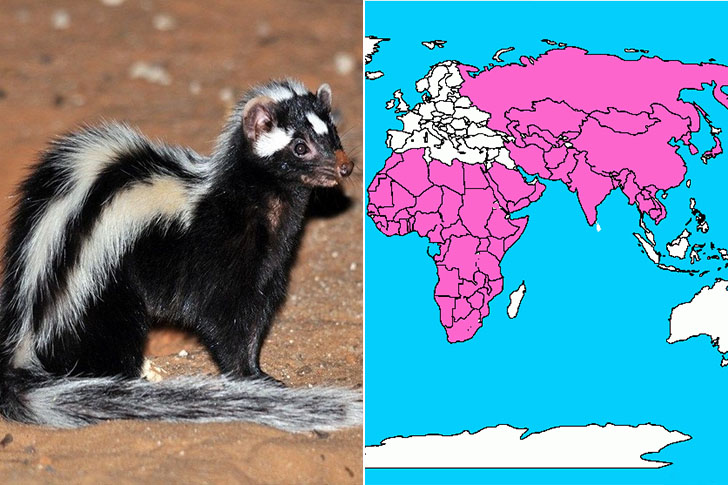
Zorillas, also known as striped polecats, are native to the deserts and grasslands of Africa and southwestern Asia. These cunning creatures have a unique defense mechanism—when threatened, they can emit a foul-smelling spray that would make even the bravest predators run for cover.
This pungent musk is produced in their rectal glands and can be accurately aimed up to six feet away, giving the zorilla a reliable line of defense against attackers. Despite this, some people are drawn to keeping a striped polecat as an exotic pet. However, it still pays to remember that these animals are wild and have complex needs.
Patagonian Mara - Argentina
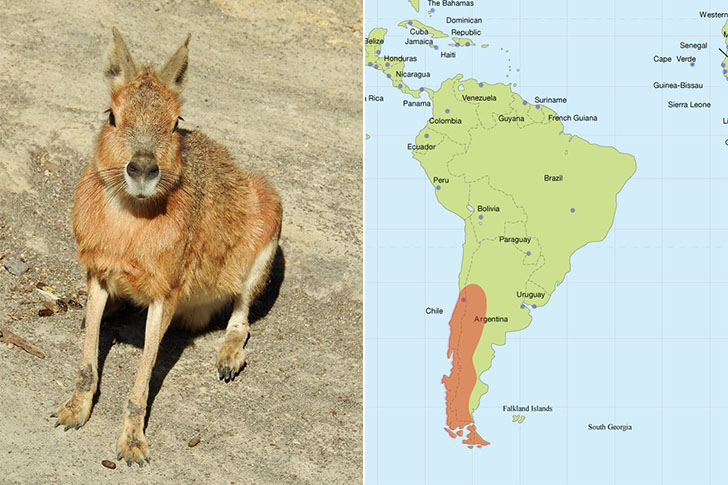
The Patagonian Mara, also known as the cavy, is native to Argentina, specifically the grasslands and scrublands of the Patagonian region in the southern part of the country. These large, rabbit-like rodents have adapted to their habitat by developing powerful legs that allow them to run up to 45 miles per hour in short bursts.
They are also known for their monogamous mating habits and the fact that they have been observed exhibiting mourning behaviors when their mates or offspring die. While some people have kept them as pets, they require a lot of space and specialized care, making them challenging animals to keep.
Ring-Tailed Cat - North America

The ring-tailed cat, also known as the "miner's cat," is a mischievous tiny critter that hails from the southwestern United States and Mexico. They have a raccoon-like appearance with a striped tail and big, curious eyes that will melt your heart. But, they aren't cats at all—in fact, they are related to the raccoon family.
These clever creatures are known for their acrobatic skills and love to climb trees, explore their surroundings, and play with toys. As pets, they require a lot of attention and playtime, but their playful nature makes them great companions for those willing to put in the effort.
Kinkajou - Central and South America
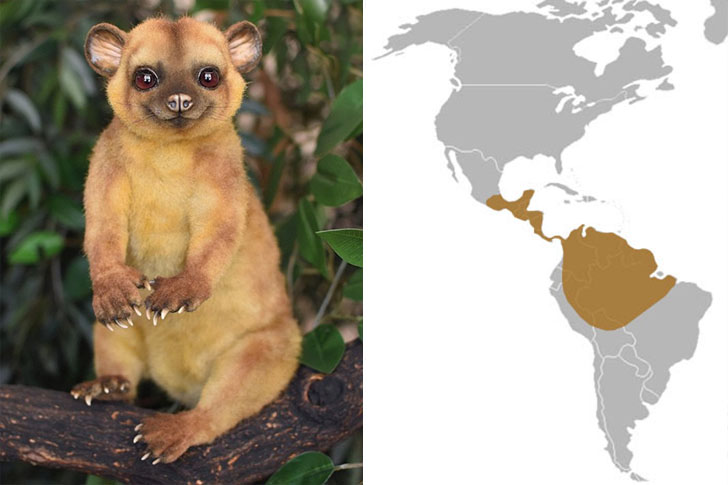
Kinkajous, or "honey bears," are native to Central and South America. These adorable creatures are known for their long, prehensile tails and love for sweet things, especially fruit. While they make great pets for some, they are not for the faint of heart, as they require lots of attention, socialization, and a specialized diet.
Interestingly, they gained some notoriety in 2006 when Paris Hilton was reportedly bitten by her pet kinkajou, causing a surge in interest in these cute critters. Despite their popularity, and like any other potential pets, owning one requires significant commitment and may not be suitable for everyone.
Caecilian - South and Central America, Africa, and Southeast Asia

Caecilians are legless amphibians native to tropical regions around the world, including South and Central America, Africa, and Southeast Asia. Despite their snake-like appearance, they are not related to these slimy reptiles but are more closely related to frogs and salamanders.
Caecilians are unique in that they have very poor eyesight and navigate their environment primarily through touch and smell, and they require specific conditions to thrive. For example, the temperature in their enclosure should be between 72 and 78 degrees Fahrenheit. They will thrive better in an environment where the temperature is consistently maintainable and won't have any sudden changes.
Red River Hog - West and Central Africa

The Red River Hog, native to sub-Saharan Africa, is a unique and fascinating animal. These hogs have a distinctive reddish-brown coat, with black and white stripes running down their faces and necks. They also have impressive tusks, which they use to defend themselves against predators.
While they can be kept as pets, it is generally not recommended or legal in most places. They are wild animals that have specific needs and behaviors that are difficult to replicate in a domestic setting. They are also social animals that live in groups or sounders and need interaction with other hogs to thrive.
Paca - Central and South America

Pacas are popular in the exotic pet world. They hail from the jungles of Central and South America. These adorable rodents are not your average pets, as they have a unique feature of four toes on their front feet and three on their hind feet. They are also known for their exceptional swimming abilities, which makes them stand out in the pet market.
They can even hold their breath underwater for up to 15 minutes! However, owning one comes with challenges, such as their destructive habits of chewing anything in sight, including electrical wiring. So if you're thinking of getting one, better prepare yourself for some home repairs.
Gambian-Pouched Rat - Sub-Saharan Africa

Gambian pouched rats, also known as "African giant pouched rats," are native to sub-Saharan Africa. They can grow up to three feet long, including their tail, and weigh as much as nine pounds. They are omnivores and feed on various items such as fruits, vegetables, and insects.
These creatures are incredibly popular as pets due to their intelligence and their ability to be trained to detect landmines and tuberculosis. In fact, Gambian pouched rats gained international attention after they were trained to detect landmines in Mozambique. They have also gained some notoriety for helping detect the early stages of tuberculosis in Tanzania.
Asian Palm Civets - Southeast Asia
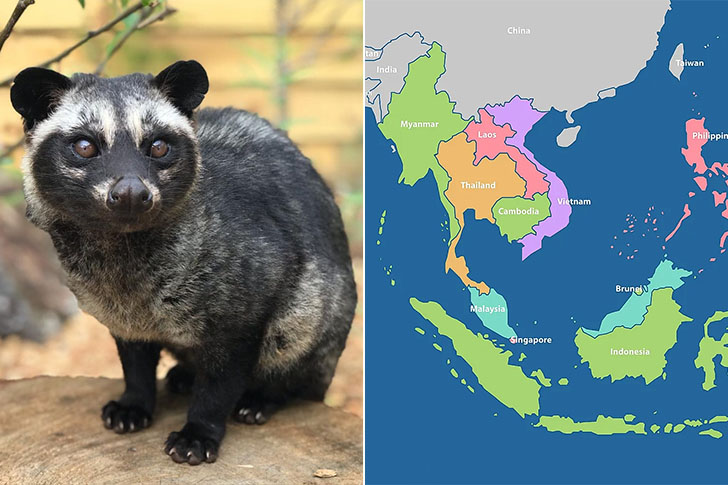
Asian palm civets are native to Southeast Asia, including Indonesia, Thailand, and Malaysia. They are known for their unique ability to produce the most expensive coffee in the world, Kopi Luwak, made from coffee beans that have been digested and excreted by the civets. In the '90s and '00s, however, these animals gained attention as potential pets.
Despite their adorable appearance, pet ownership can be challenging as they require specific diets and large enclosures to thrive. Additionally, many countries have laws prohibiting the ownership of these creatures as pets, and it is illegal to export them from their native countries.
Jerboa - Northern Africa, Middle East, and Central Asia
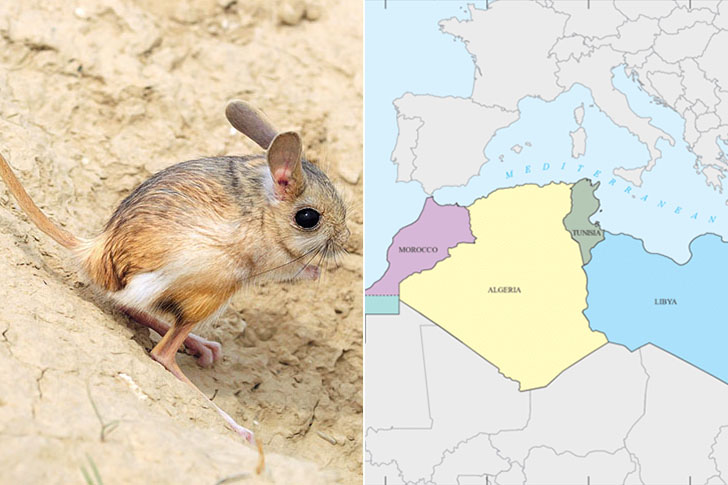
The jerboa is a fascinating little creature bound to capture anyone's attention with its incredible hopping skills and unique features. Found in the arid regions of Northern Africa, the Middle East, and Central Asia, these rodents have adapted well to their desert habitats. They have long legs that allow them to travel at high speeds across sand dunes, and they're nocturnal with exceptional hearing and vision.
While some people may find them too cute to resist and keep them as pets, remember that jerboas have specific care needs. They require an appropriate environment and diet; only experienced pet owners should consider keeping them.
Greater Galago - Southeastern Africa

The greater galago, the thick-tailed bushbaby, is a fascinating African primate species. These nocturnal creatures are a sight to behold with their distinctive eyes and impressive jumping abilities. They are social animals and can live in groups of up to ten.
Their omnivorous diet includes insects, small vertebrates, and fruit, and they use a variety of vocalizations to communicate with each other. However, as cute as they are, they can be unsuitable as pets, as they have specific care requirements and are protected under conservation laws in many African countries. So, let's leave these incredible creatures in their natural habitat where they belong.
Bat-eared Fox - East and Southern Africa

Ever heard of the bat-eared fox? These little creatures are so cute, with their adorable faces and ears that make them look like they're always listening to a secret conversation. Although native to Africa, some people have attempted to keep them as pets. However, due to their specific care requirements, these foxes are not recommended as pets and will escape if they can.
It's also worth noting that they are protected by law in many countries, so it's not easy to find breeders who can provide them. As much as we may love these charming creatures, please respect their natural habitat and leave them be.
Capybara - Northern and Central South America

The capybara is the world's largest rodent and is native to South America. These adorable creatures have round, stout bodies, and webbed feet, which make them excellent swimmers. Interestingly, these animals are popular in Japan as pets, where they are known as "Kapybaras."
While it's not uncommon to see them in zoos and sanctuaries in other parts of the world, it's not legal to own one as a pet in many places. Even in Japan, there are specific regulations surrounding their care and ownership. It's essential to consider the unique needs of these animals before deciding to bring one home.
Palawan Porcupine - Philippines
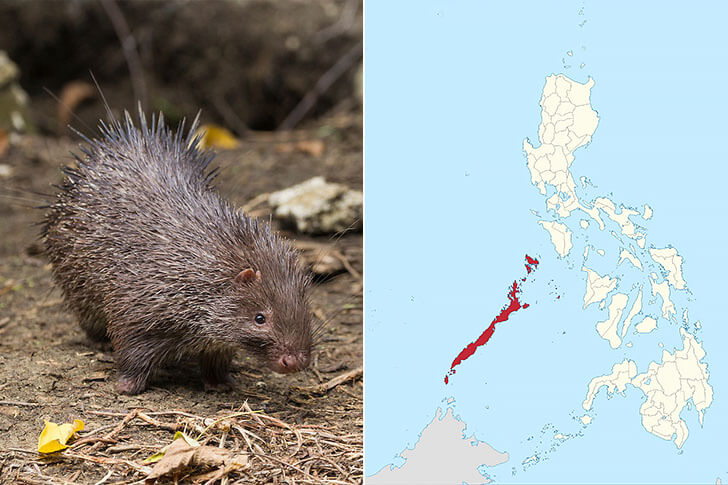
This spiky fellow is native to the Philippines and is known for its "I don't want to be hugged" look. With quills that can grow up to a foot long, they're not exactly the cuddly type. The Palawan porcupine's unique diet includes fruits, bark, and soil, making them the ultimate foodie.
Although they may seem like a great choice for exotic pet lovers, please remember that they're not exactly low-maintenance pets. Plus, trying to give one a belly rub might result in a painful lesson on personal space. It's better to leave these spiky creatures in their natural habitat and admire them from afar.
Tenrec - Madagascar
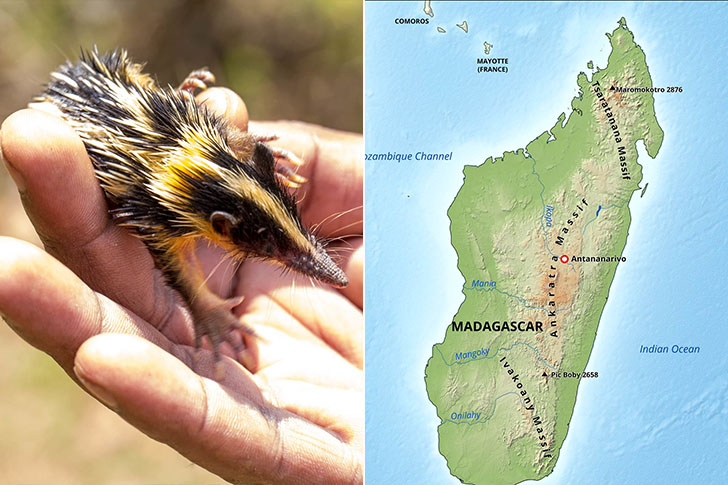
Tenrecs are endemic to Madagascar, but some species have been introduced to parts of Africa. Interestingly, the name comes from the word "tandraka," which is anchored to the Malay word "landak" that translate to "porcupine." They have long snouts, sharp claws, and dense fur that just make them look ready for anything. But can we keep one as a pet? Veterinarians do not necessarily recommend it.
They have a specific diet, mostly live insects and other little critters. Plus, they need a specific environment to live in. They are ideal for someone with experience with exotic animals. It might be best to stick to a more traditional pet.
Sea Apple - Western Pacific Ocean
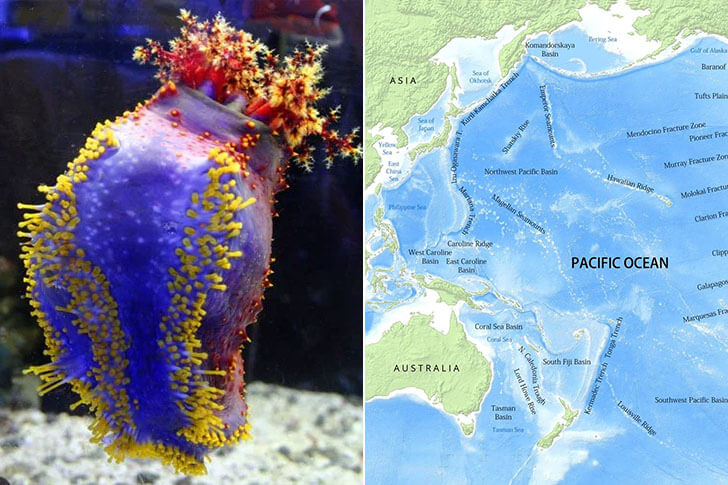
The sea apple is a captivating echinoderm found in the ocean. This unique creature resembles a colorful piece of fruit, with a body adorned in a spectrum of vivid hues ranging from purple to orange. However, despite its beauty, the sea apple can poison an entire aquarium if not handled correctly so it's best to leave it to the experts.
Ingesting the sea apple's toxins can cause an abrupt and significant loss of aquatic life in the tank. Therefore, they're best kept in species-specific tanks with no other organisms. Additionally, these picky eaters require a mature aquarium, live rock, and a specialized diet to survive.
Springhare - Africa
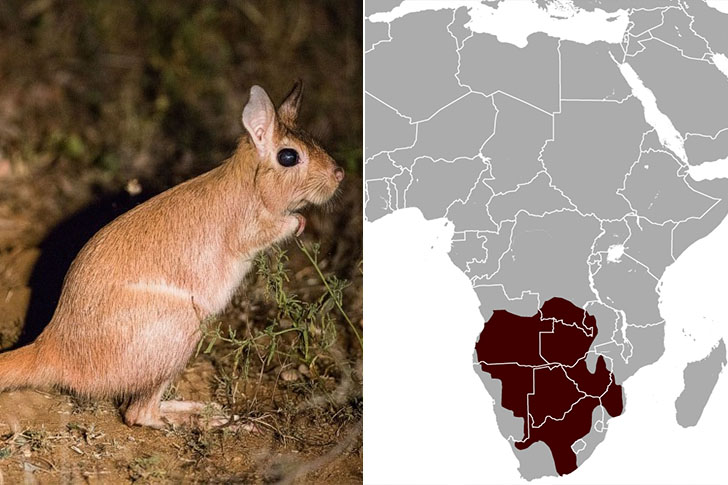
Spring hares, intriguing mammals that can easily be mistaken for kangaroos, have historically been kept as pets in some African countries. However, overhunting and habitat loss have led to a decline in their population. In the 21st century, these animals are not commonly kept as pets due to their wild nature and legal restrictions.
These incredible creatures have robust hind legs that enable them to leap up to ten feet in a single bound, making them one of the most remarkable jumpers in the animal kingdom. While they are still found in the wild and in zoos, they face increasing threats to their natural habitats due to human activities.
Chacoan Mara - South America and Paraguay

Some exotic pet lovers might be tempted to keep a Chacoan mara. They're adorable, fascinating creatures with a unique look that will turn heads. In their native land of Argentina, they were traditionally haunted for their fur and meat. But before rushing out to get one, some factors must be considered.
They have specialized care requirements that can be quite challenging to meet. They need plenty of space, a special diet, and specific temperature and humidity levels to stay healthy. Instead, we should encourage the conservation and protection of this species in their natural habitat. They feed on fruits, seeds, and wood plants, especially during the rainy season.
Whip Scorpion - North and South America, Asia, and Africa
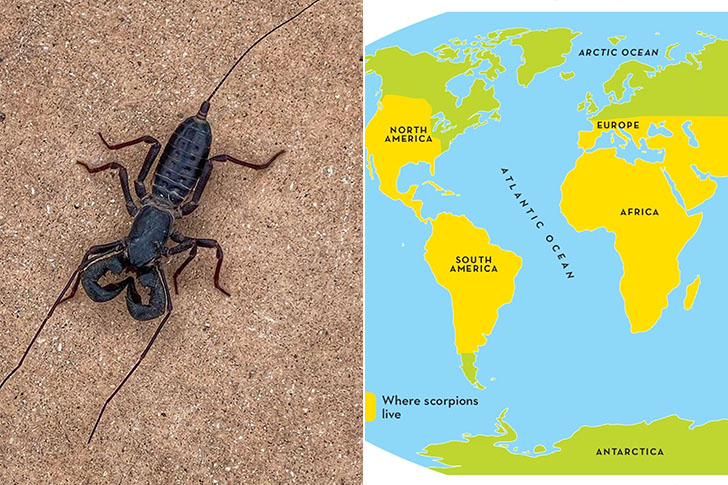
Whip scorpions, or vinegaroons, can make fascinating exotic pets. While they are not for everyone, some adventurous pet owners find them captivating due to their unusual appearance and unique behavior. Caring for them can be challenging, as they have specific needs and can be difficult to handle.
Vinegaroons require a terrarium with a secure lid and sand and peat moss substrate. They also need hiding places, a water dish, and a diet of insects. They are nocturnal and can emit a vinegar-like spray as a defense mechanism, but they are docile and low-maintenance pets that can live up to ten years in captivity.
Geoffrey's Cat - Southern and Central South America
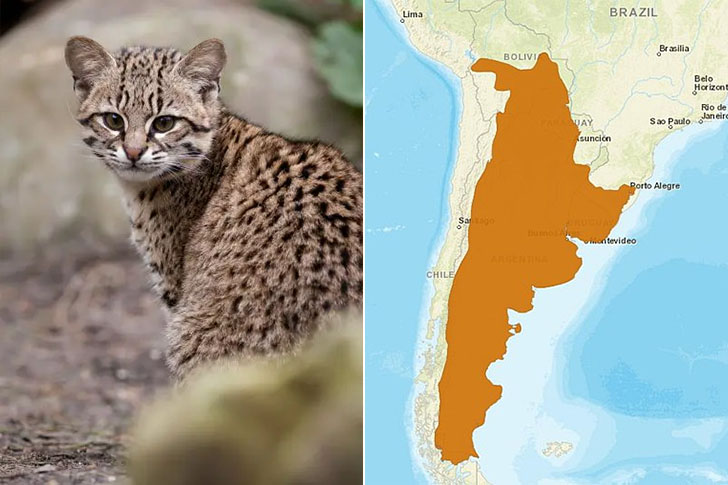
Geoffrey's cat is a tiny wild cat from South America and a skilled hunter. It was named after Étienne Geoffroy Saint-Hilaire, a French naturalist who first identified the species. While it's not a popular animal companion, some people keep them as exotic pets. They're charming creatures with distinctive coat patterns and playful personalities.
However, they're wild animals and can be unpredictable and potentially dangerous if not handled properly. When considering keeping a Geoffroy's cat as a pet, it is important to provide them with a spacious, secure enclosure that mimics their natural habitat, including hiding places and a diet of high-quality meats.
Snake-Necked Turtle - Southeastern Australia
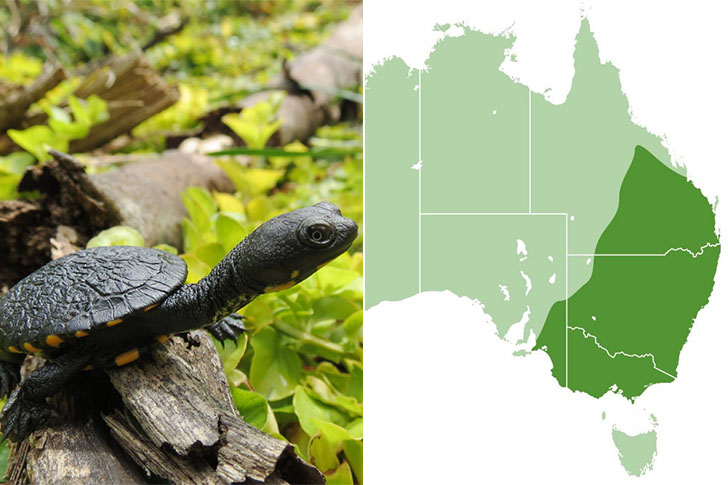
The snake-necked turtle, also known as the Eastern long-necked turtle, is a species native to Australia. These freshwater turtles are named after their long necks, which they use to reach for food and defend themselves from predators. They can grow up to 12 inches long and have a lifespan of up to 50 years.
While some people may find the snake-necked turtle an intriguing pet, they require a significant amount of care and attention. They need a large tank with a basking area, UVB lighting, and a proper diet that includes live prey. Additionally, they can carry Salmonella bacteria, posing a risk to humans.
Crab-eating Raccoon - South America
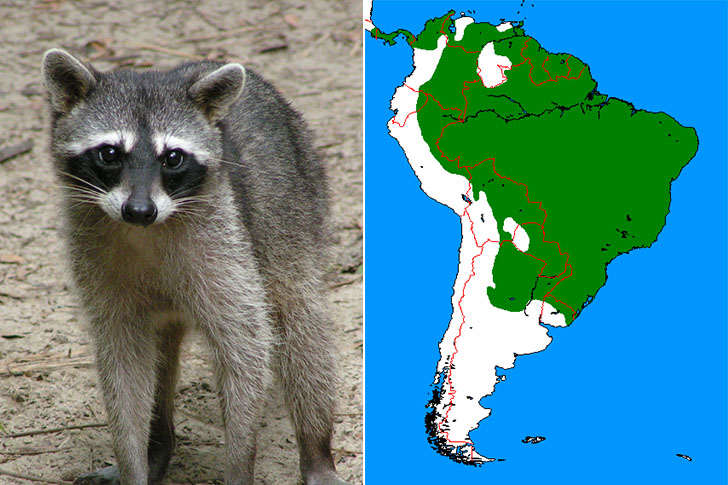
Crab-eating raccoons, also known as South American raccoons, are found in Central and South America. These creatures are medium-sized and have distinctive dark masks around their eyes. As their name suggests, they feed on crabs and eat other small aquatic animals, fruits, and insects.
They have been known to use tools like stones to crack open crab shells. While some people may find these raccoons fascinating and consider keeping them as pets, it is important to note that they are not domesticated animals and can be challenging to care for. In many countries, keeping crab-eating raccoons as pets is also illegal.
Bettong - Australia

Bettongs, the lovable marsupials of Australia, are often likened to miniature kangaroos due to their endearing appearance. Their impressive digging skills and food-foraging abilities are notable features of these hopping creatures. Unfortunately, several bettong species are endangered today, primarily due to habitat destruction and invasive predators.
While they may be cherished by wildlife enthusiasts, bettongs have never been kept as pets historically. Interestingly, these creatures are experts at soil restoration. As they dig for food and create burrows, they also inadvertently help to aerate and fertilize the soil, which promotes the growth of new plants and supports the survival of other animal species.
Pom-Pom Anemone Crab - Pacific Oceans
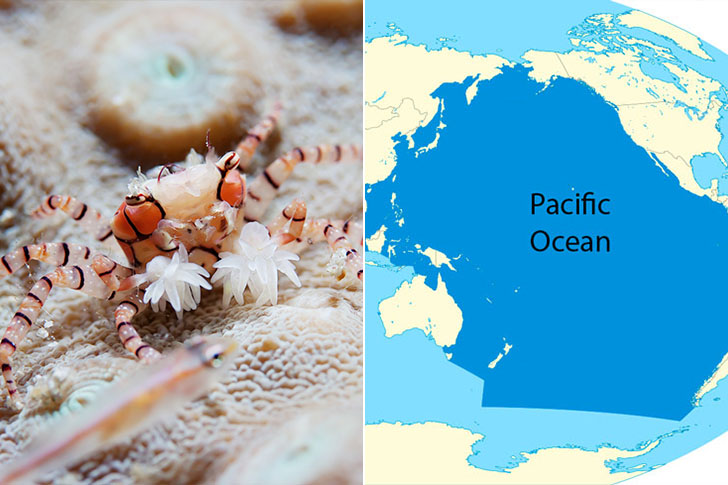
Pom-pom crabs are small, colorful crustaceans that live in the Indo-Pacific region, including the coasts of Indonesia, Malaysia, and the Philippines. These tiny creatures have a symbiotic relationship with the pom-pom crabs, providing them with protection and a food source.
The crabs, in turn, help to clean the anemone by removing debris and parasites. With their fluffy pincers, pom-pom crabs are a popular sight for scuba divers. However, they are not suitable to be kept as exotic pets due to their specialized needs and important role in the ecosystem. Removing them from their natural habitat will harm the delicate balance of the underwater world.
Tamandua - South America
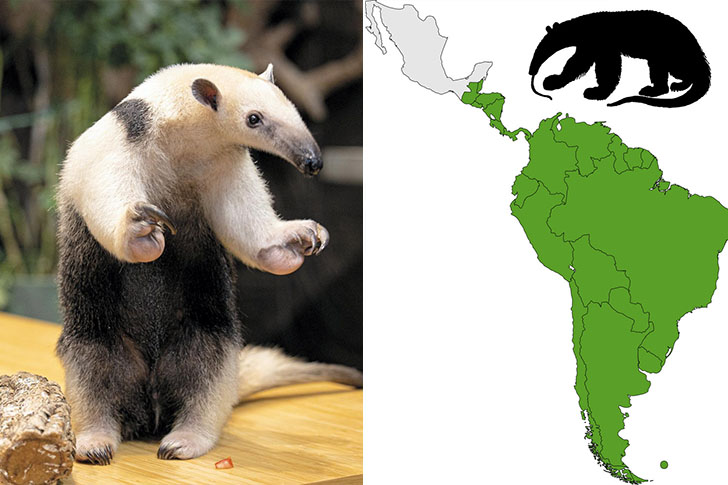
Tamanduas, also known as lesser anteaters, are small mammals native to Central and South America. With their long snouts and sticky tongues, they are expert insect hunters and often seen climbing trees for their next meal. These adorable creatures are also known for their distinctive markings, which can range from white stripes to solid black coats.
While tamanduas may look like appealing exotic pets, they are unsuitable for domestic life due to their specialized needs and important role in the ecosystem. Attempting to keep them as pets would be as ridiculous as trying to domesticate a tree-climbing, insect-eating, nose-poking acrobat.
Cusimanse - Central Africa
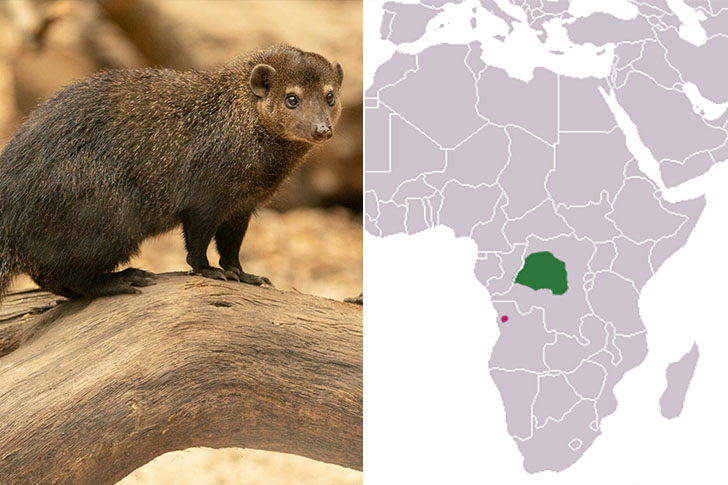
The cusimanse is a fascinating small carnivorous mammal that belongs to the mongoose family and is native to Africa. These social animals live in groups and use a variety of vocalizations to communicate with one another. They are agile hunters, preying on insects, rodents, birds, and reptiles, and are known for their flexibility and ability to climb trees.
In North America and Europe, these creatures are kept as exotic pets due to their playful and curious nature. They require an environment that closely mimics their natural habitat. They need a spacious enclosure with plenty of hiding spots, climbing structures, and substrate to burrow in.
Marbled Polecat - Southeastern Europe to Russia and China
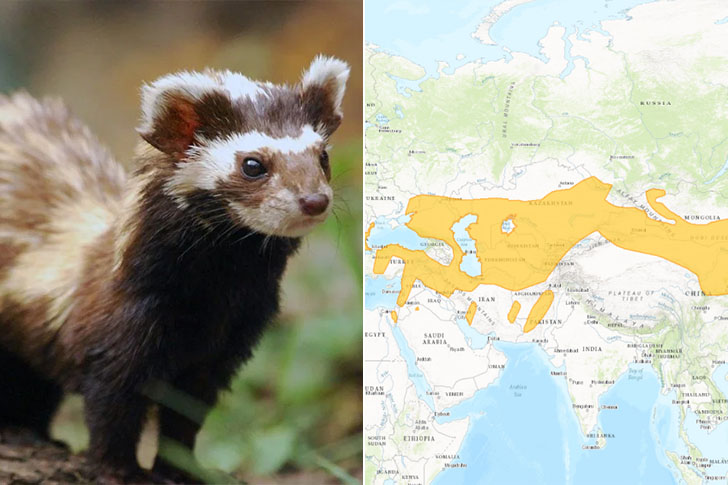
The marbled polecat is a mustelid native to Central Asia and Eastern Europe. These little creatures rock a black-and-white tuxedo that makes them look classy. They're active, nocturnal hunters with a penchant for small rodents, birds, and reptiles. However, as much as they seem like fantastic pets, marbled polecats aren't typically kept as household companions.
Caring for them requires special knowledge and attention, and there may be legal or ethical concerns about owning one. They need ample space to run, climb, and explore, as they are active creatures. Providing environmental enrichment, such as toys or puzzles, prevents boredom and negative behaviors.
Garden Eel - Indo-Pacific and Northwestern Australia to the Red Sea and East Africa
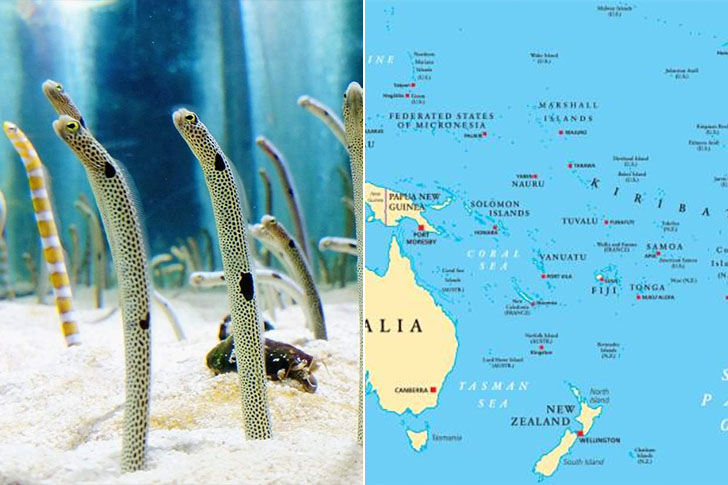
Garden eels are slender, serpentine creatures found in the sandy ocean floors of warm tropical and subtropical waters worldwide. They have a peculiar habit of living in large colonies, with dozens of eels poking out of the sand like blades of grass.
These little critters are fascinating to watch as they sway in unison with the ocean currents, waiting for planktonic food to float by. While they might seem appealing to a home aquarium, garden eels are notoriously difficult to care for and require specific tank conditions. Furthermore, they have a high mortality rate in captivity, making them a risky choice for inexperienced aquarists.
African Jungle Cat - Africa, West, and Central Asia, Rajasthan in India, and Xinjiang in China

The African jungle cat is a medium-sized wild feline found throughout Africa and parts of Asia. They are known for their unique appearance, with slender, agile bodies and sandy brown fur that helps them blend in with their surroundings. These animals are skilled hunters and can take down larger prey than themselves.
Despite their wild nature, some people have attempted to keep these creatures as pets. They have specific needs that must be met to ensure their well-being. They require a significant amount of space to roam and exercise. Their diet should consist of raw meat and be free from preservatives.
Degu - Central Chile

The degu is a small, sociable rodent native to Chile. These furry little creatures are known for their adorable appearance, with large round ears and bushy tails. They are highly social animals and thrive in groups, which is why they are often kept as pets. They are active and playful and enjoy running on hamster wheels.
However, they require specific care, including a specialized diet consisting of high-quality hay, such as timothy hay, supplemented with a small amount of fresh vegetables and fruit. Degus require a diet high in fiber to maintain their dental health and digestion. Also, they need a large cage with plenty of toys and hiding places.
New Guinea Singing Dog - New Guinea

The New Guinea singing dog is a wild dog breed that's been around for over 6,000 years and is native to the island of New Guinea. The breed's distinct howl, which resembles a wolf's, sets it apart from other dogs. While it has gained popularity as a pet due to its rarity and unique characteristics, keeping one is not advisable.
This breed has not been domesticated and needs an experienced owner who can provide them with appropriate care. They require daily exercise and mental stimulation, and their diet should consist of high-quality meat. It's also crucial to provide a secure living environment with ample space for running and playing.
Coatimundi - South America, Central America, Mexico, and the Southwestern United States
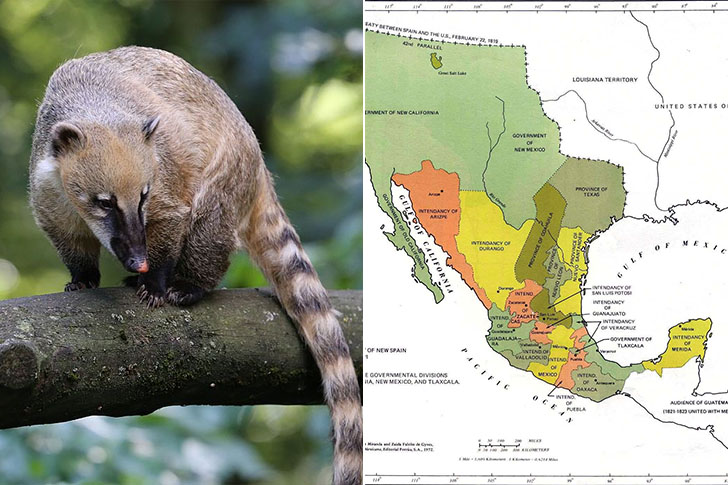
Coatimundis are social animals that live in groups of up to 20 individuals in the wild. These groups, called bands, are led by a dominant male and consist of females and their young. Within the band, they communicate with each other using a variety of vocalizations, including grunts, chirps, and screams.
They also have a keen sense of smell, which they use to locate food and identify other members of their band. While they may seem like exotic pets, coatimundis are not recommended for most people. These fascinating animals play important roles in their ecosystems and are best appreciated in their natural habitats.
Ferrets - North Africa and Western Eurasia

Ferrets are small, carnivorous mammals that belong to the same family as weasels and otters. These creatures were originally domesticated in Europe over 2,500 years ago for the purpose of hunting rodents, rabbits, and other small prey animals. The ancient Romans also used ferrets for flushing rabbits out of their warrens for food.
Despite their long history as working animals, ferrets have also become popular pets due to their playful and social nature, and many were selectively bred for their friendly temperament. They may be small, but they sure have big personalities—it's no wonder they've stolen the hearts of so many humans!
Leopard Geckos - Asia and the Middle East
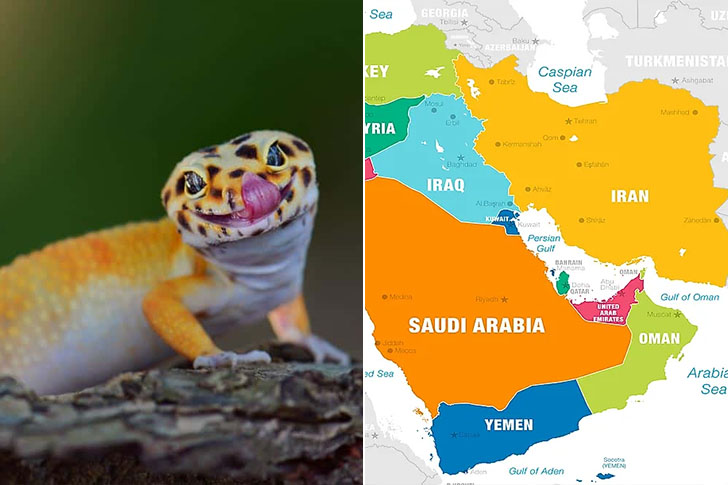
Leopard geckos are a popular lizard species native to the arid regions of Afghanistan, Pakistan, and India. These unique creatures are known for their beautiful spotted pattern, which is how they got their name. They are also popular as pets due to their relatively docile nature and easy-to-care-for needs.
Leopard geckos are nocturnal, meaning they are most active at night and can live up to 20 years with proper care. They can also shed their tails as a defense mechanism, which will grow back over time. In captivity, they can thrive on a diet of live insects and commercially available gecko food.
Skunk - United States and Canada
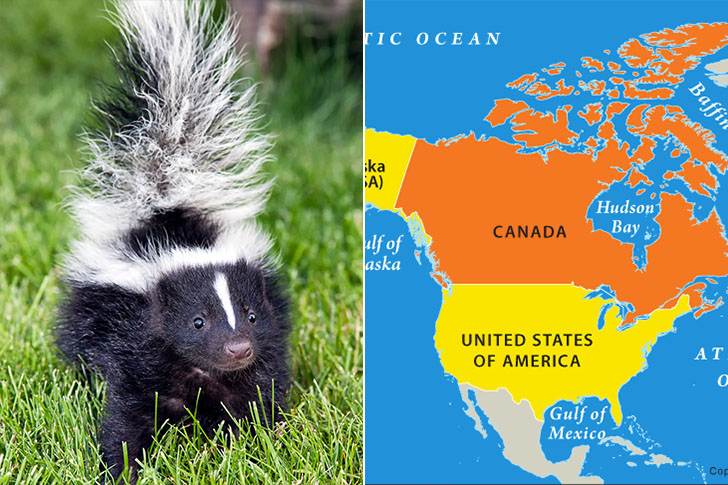
Pet skunks may not be the first choice for a furry companion, but they have gained popularity. Bred for their friendly personalities and lack of musk, they require specialized care and plenty of attention. These social animals can form strong bonds with their owners, but be prepared for their potent odor, which can still be present despite lacking musk.
It's important to check local regulations before adopting a pet skunk, as they may not be legal in all areas. While they may not be for everyone, those looking for a unique and spirited pet should consider one as their furry friend.





